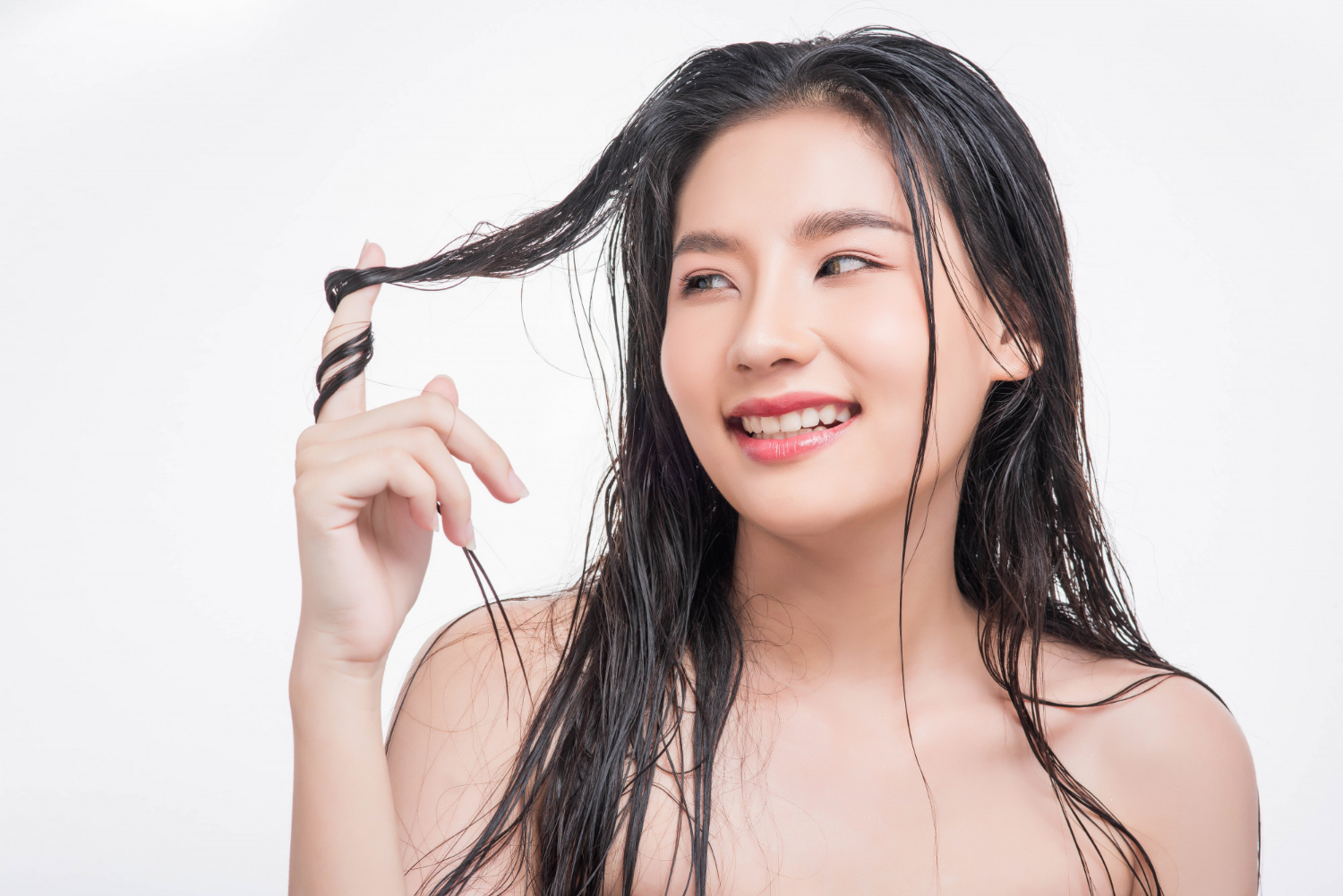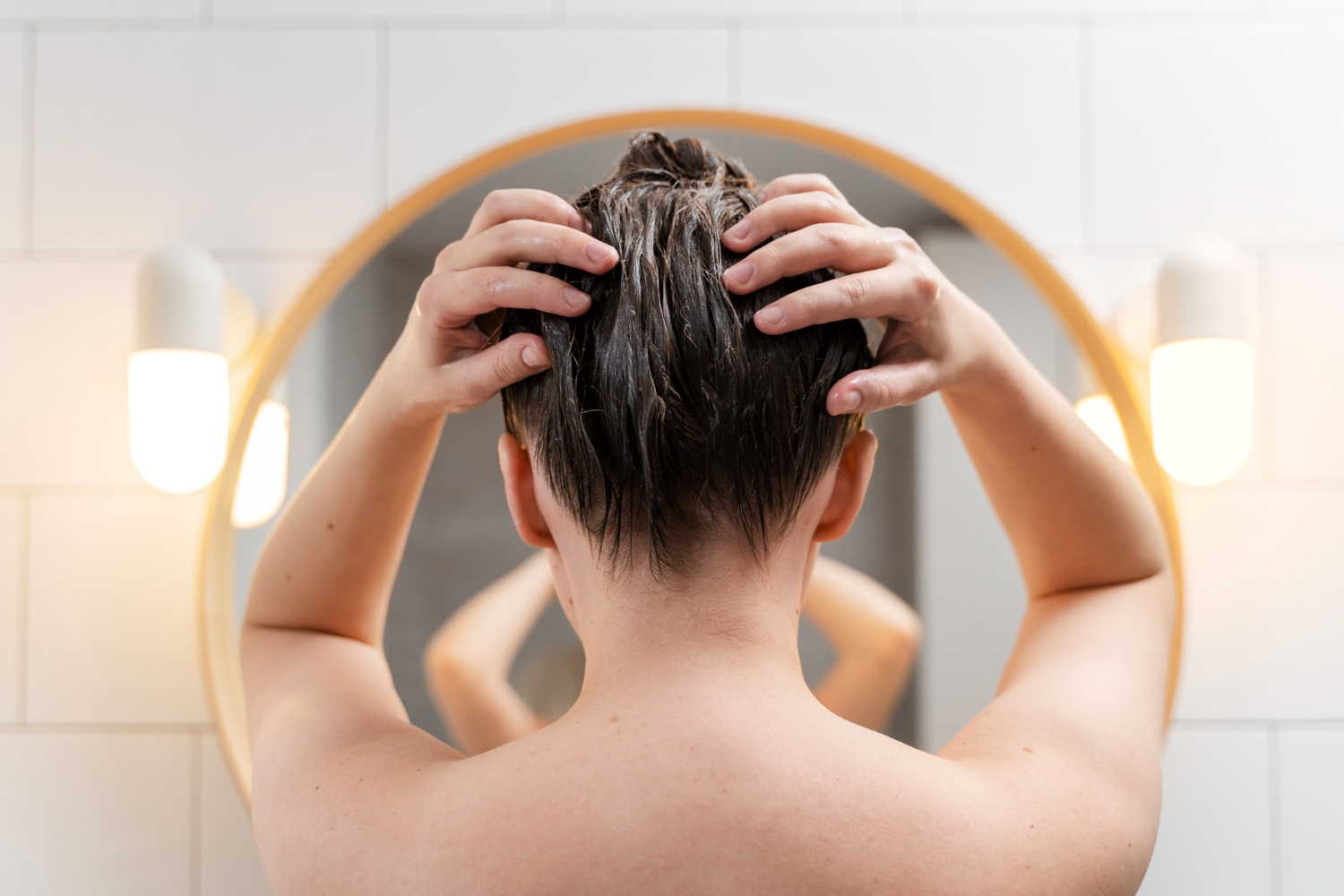
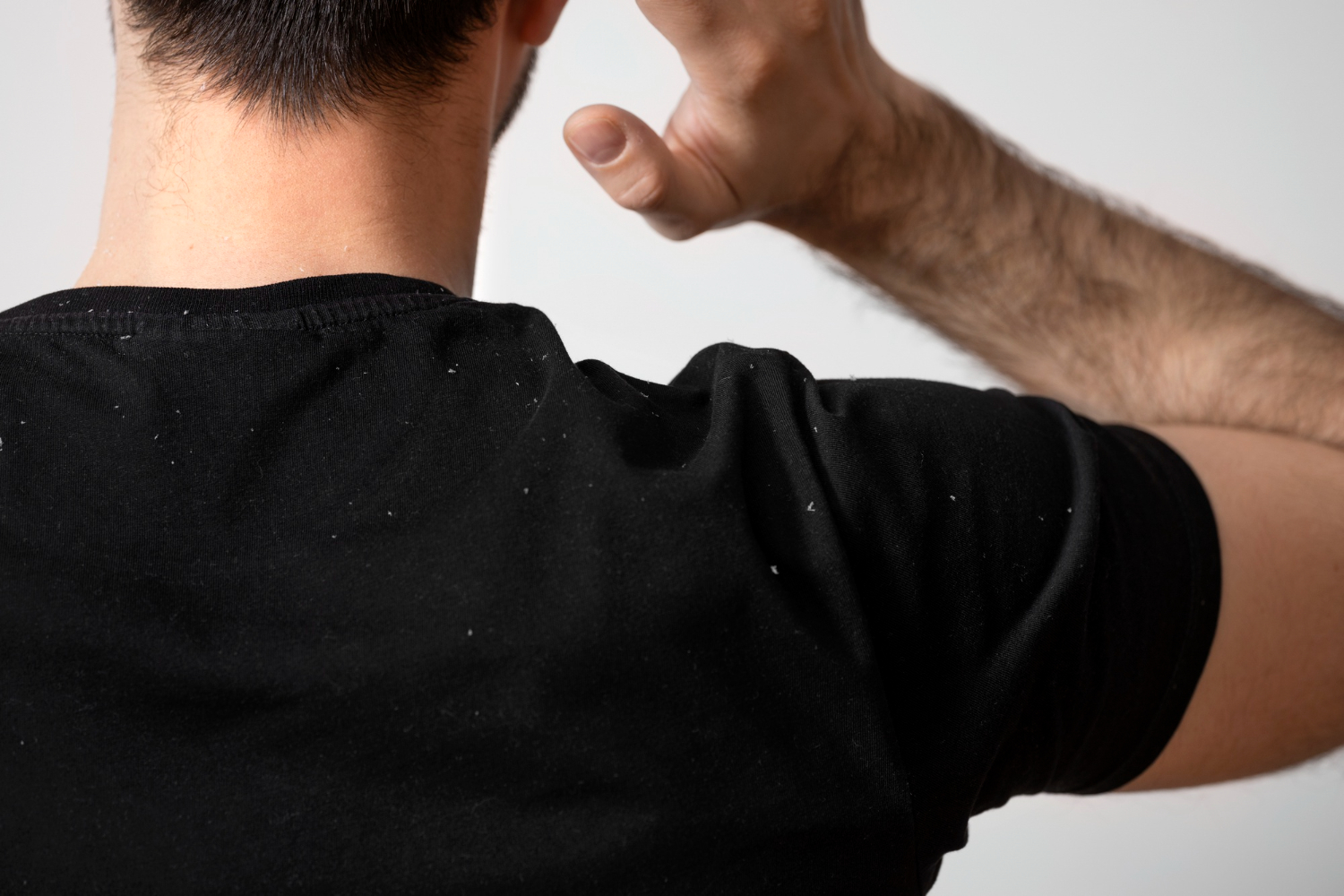
Let’s be honest, there’s a special kind of dread that comes with dandruff. You put on your favorite black t-shirt or that sharp navy blazer, and then you do it… the shoulder check. You see those little white flakes, and your confidence just plummets.
So, you did the logical thing. You went to the store, grabbed a bottle of dandruff shampoo that promised a clear, flake-free scalp, and you’ve been using it religiously. But here’s the problem: it’s not working. The flakes are still there, the itch is driving you crazy, and you’re starting to feel like you’re just wasting your money. It’s frustrating to realize that your Dandruff Shampoo Isn’t Working.
What gives? Is your scalp just a lost cause?
I can tell you right now, it’s not. The issue is rarely that your dandruff is “incurable.” More often, the problem lies somewhere between the product you chose and the way you’re using it. Before you give up and buy a lifetime supply of white shirts, let’s dive into the five most common reasons your dandruff shampoo is failing you.
We’ve all been there. That “black shirt panic” is a real confidence-killer. You’re constantly self-conscious, trying to subtly brush your shoulders off. It’s frustrating! You’re following the rules, you’re using the “medicine,” but the problem persists. The truth is, that bottle in your shower might be the wrong tool for the job. Let’s find out why.
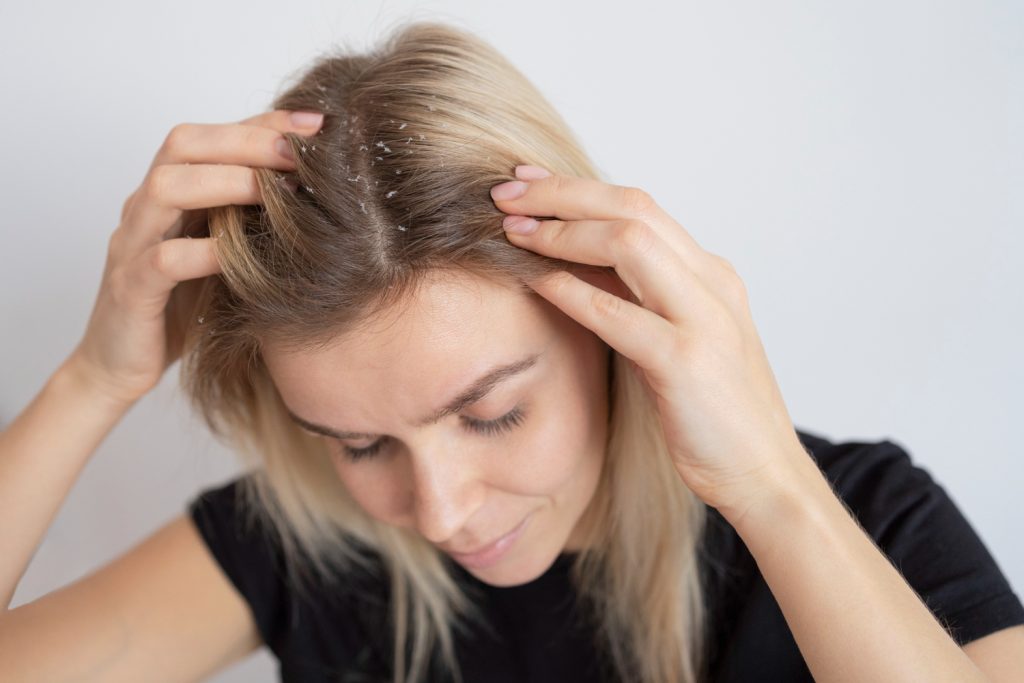
This is, without a doubt, the biggest culprit. We see flakes and our brain screams “DANDRUFF!” But not all flakes are created equal. Using a powerful, anti-fungal dandruff shampoo on a scalp that isn’t suffering from fungal dandruff can, ironically, make the problem so much worse.
Think of it this way: true dandruff is like an overactive oil factory on your scalp. It’s caused by an overgrowth of a yeast-like fungus called Malassezia, which feeds on your scalp’s natural oils (sebum). This process irritates the scalp, causing it to produce skin cells faster, which then shed as large, oily, yellowish-white flakes.
A dry scalp, on the other hand, is like a desert. It’s not producing enough oil. The skin gets tight, irritated, and flaky. These flakes are typically small, white, and powdery.
Here’s the problem: you’re using a shampoo designed to strip oil and kill fungus (for dandruff) on a scalp that is desperate for moisture (dry scalp). You’re essentially pouring a drying agent on a desert. This just aggravates the dryness, leading to… you guessed it… more flakes.
Sometimes, what looks like stubborn dandruff is actually its angrier, more intense cousin: seborrheic dermatitis. This condition causes the same oily, flaky symptoms but with a bonus of red, greasy, inflamed skin. It can even show up on your face (like in the eyebrows) and chest.
Or, it could be psoriasis, an autoimmune condition where your body produces skin cells at hyper-speed. This creates thick, silvery, well-defined patches or “plaques.” An over-the-counter dandruff shampoo simply isn’t strong enough to handle these conditions. They require a dermatologist’s diagnosis and often a prescription-strength or specialized scalp treatment.
Okay, so let’s say you do have classic, fungal dandruff. You’d think any “anti-dandruff” bottle would work, right? Not so fast.
Walk down the shampoo aisle and look at the “Drug Facts” box on the back of the bottles. You’ll see different “Active Ingredients.” This is the part that does the actual work.
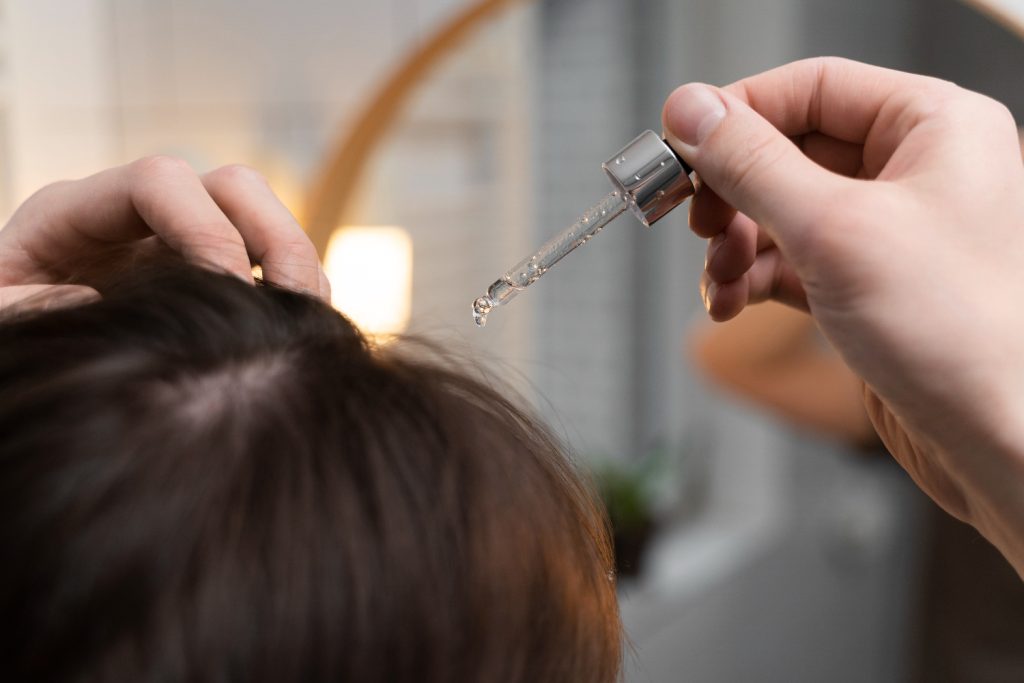
Now, do you see the problem? If your shampoo only has Salicylic Acid, you’re just sweeping the floor without ever catching the culprit who’s making the mess. You’re removing flakes, but the fungus is still having a party underneath.
If your primary issue is a raging fungal overgrowth, a shampoo with Ketoconazole or Selenium Sulfide is probably what you need. If you just have a lot of buildup and mild flaking, Salicylic Acid or Pyrithione Zinc might be enough. You might be using a sledgehammer when you need a fly swatter, or vice-versa.
This one is all about technique. You could have the perfect, most expensive, scientifically-formulated shampoo in the world, but if you use it wrong, it’s useless.
This is the mistake I see people make all the time. You hop in the shower, lather up for 30 seconds, and rinse it all down the drain.
This does nothing.
These medicated ingredients are not magic. They need contact time to work. Think of it like a face mask for your scalp. You wouldn’t put a clay mask on and immediately wash it off, would you?
Read the instructions on the bottle. Most of them will tell you to lather, leave it on your scalp for 3 to 5 minutes, and then rinse. So, lather up as soon as you get in the shower, then go about your other shower business. Let that shampoo sit and work its magic!
Another common error, especially for those with thick or long hair, is that the shampoo never actually reaches the scalp. You’re just washing your hair.
You need to be deliberate. Part your hair in sections and use your fingertips (never your nails!) to massage the shampoo directly onto the skin of your scalp. That’s where the problem lives. Focus your effort there, not on the ends of your hair (which are probably dry and don’t need the harsh medicine).
Do you use dry shampoo? Mousse? Hairspray? Styling creams? Even just regular, heavy conditioners?
Over time, all these products—along with your natural sebum—can create a waxy, water-resistant film on your scalp. This is called product buildup.
You might think you’re washing it all out, but most regular shampoos aren’t strong enough to cut through this layer. Now, imagine trying to apply your expensive dandruff shampoo. It’s like trying to put sunscreen on over a raincoat.
The medicated ingredients can’t penetrate the buildup. They’re just sitting on top, completely ineffective, before being rinsed away.
The solution? Introduce a clarifying shampoo into your routine once a week. Use this first to deep-clean your scalp and strip away all that gunk. Then, the next time you wash, use your dandruff shampoo. You’ll be applying it to a clean, receptive canvas, allowing it to finally do its job.
Here’s a frustrating one: “But it used to work!” You found your holy grail shampoo, it gave you six glorious, flake-free months, and now… the flakes are back with a vengeance.
What happened? Your scalp’s microbiome is smart. That Malassezia fungus can actually adapt and become resistant to a single active ingredient over time.
The best way to combat this is to play offense. You need to keep the fungus guessing. Don’t just rely on one bottle.
Instead, buy two different dandruff shampoos with two different active ingredients. For example, get one with Ketoconazole and one with Selenium Sulfide (or Pyrithione Zinc). Use one for 3-4 weeks, and then switch to the other for the next 3-4 weeks. By rotating them, you prevent the yeast from adapting, keeping your shampoo effective for much, much longer.
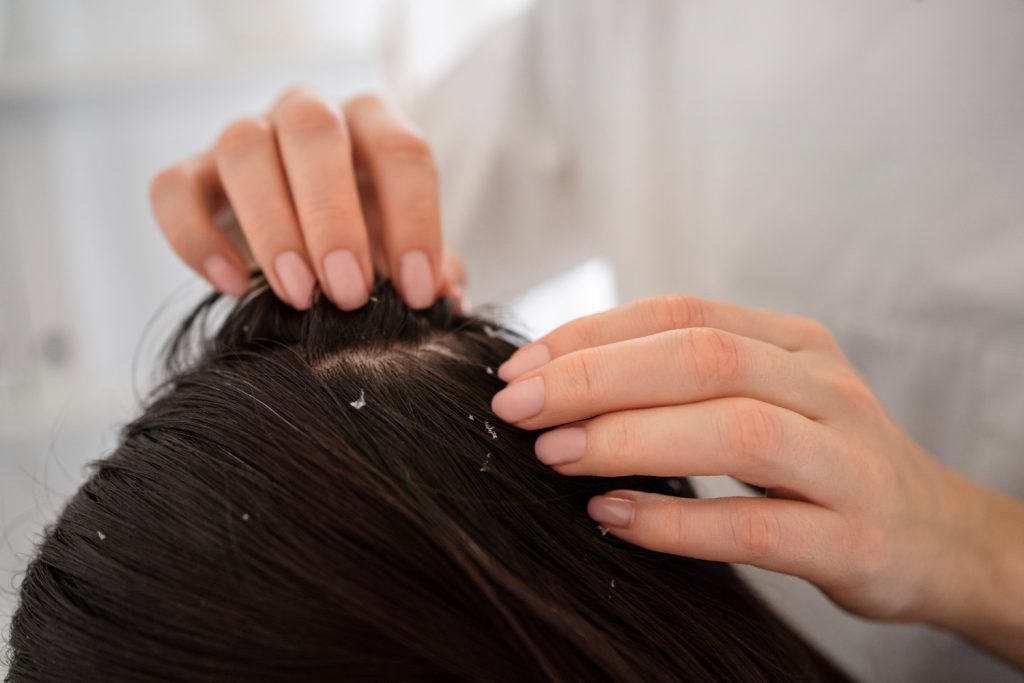
So, what if you’ve tried all of this? You’ve diagnosed properly, you’re using the right ingredient, you’re leaving it on for 5 minutes, you’ve clarified, and you’re rotating. But the flakes. Are. Still. There.
At this point, it’s time to stop fighting a battle you can’t win alone. It’s time to call in a specialist.
Scalp Treatment Changes the GameOver-the-counter shampoos are limited in their strength. A professional scalp treatment at a dedicated center or a dermatologist’s office is on a completely different level. Think of it as a medical-grade facial for your scalp.
They use specialized cameras to magnify your scalp and see exactly what’s going on—is it fungus, buildup, inflammation, or dryness? Then, they can perform treatments like deep exfoliation to remove stubborn plaques, apply professional-grade anti-fungal serums, and use technologies like light therapy to kill bacteria and calm inflammation.
Scalp Treatment in SingaporeIf you’re in a hot, humid climate, this can make scalp issues even worse. All that sweat and oil creates the perfect breeding ground for fungus.
If you’re at your wit’s end, it is absolutely worth looking for a specialized scalp treatment in Singapore. A good trichologist (a scalp specialist) can offer a customized plan that goes far beyond just a shampoo. They can analyze your scalp’s specific needs and provide a targeted scalp treatment that finally resets your scalp’s health.
Having a dandruff shampoo that isn’t working is incredibly demoralizing. But it’s not a sign that your scalp is a lost cause—it’s a sign that your strategy is wrong.
Don’t just keep scrubbing harder with the same failed product. Become a scalp detective.
And most importantly, know when to ask for help. A professional scalp treatment isn’t a failure—it’s an investment in your health and confidence. You deserve a scalp that feels good and the freedom to wear whatever color you want, panic-free.


